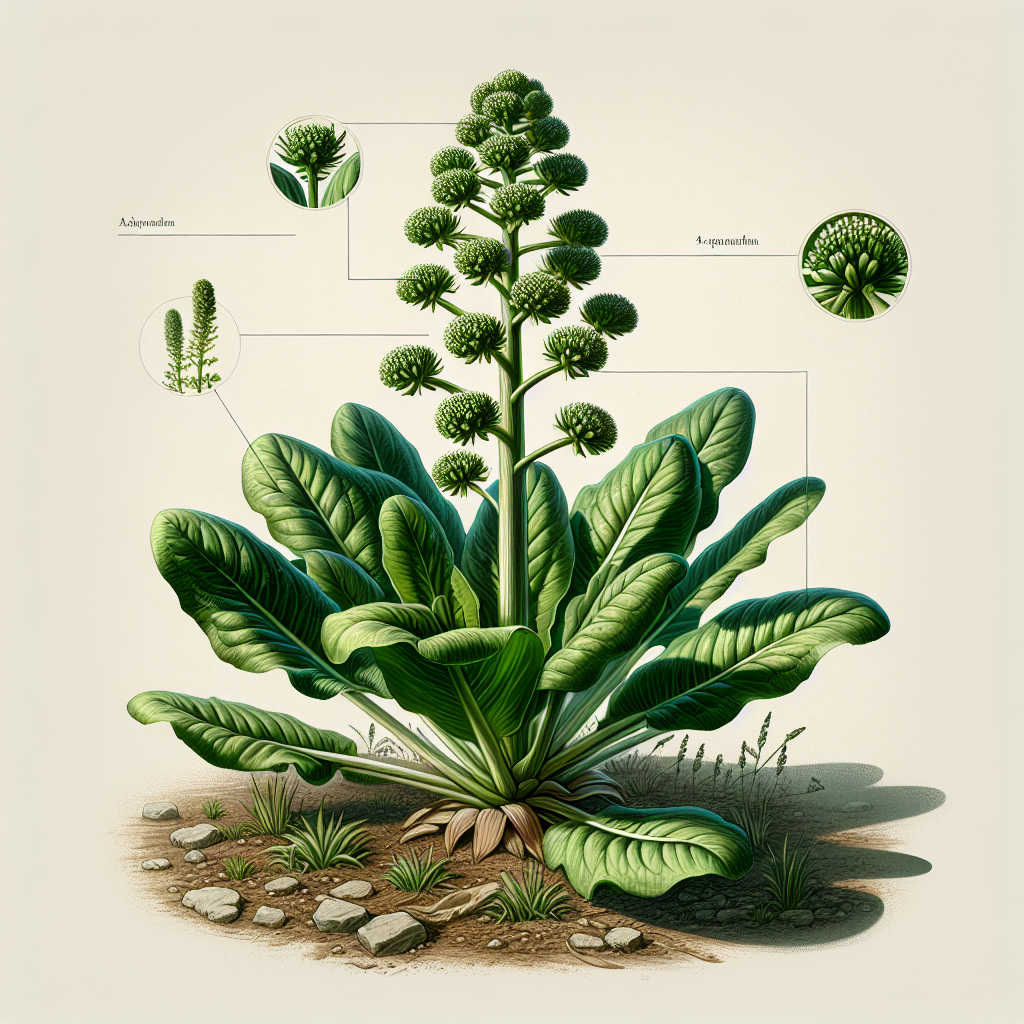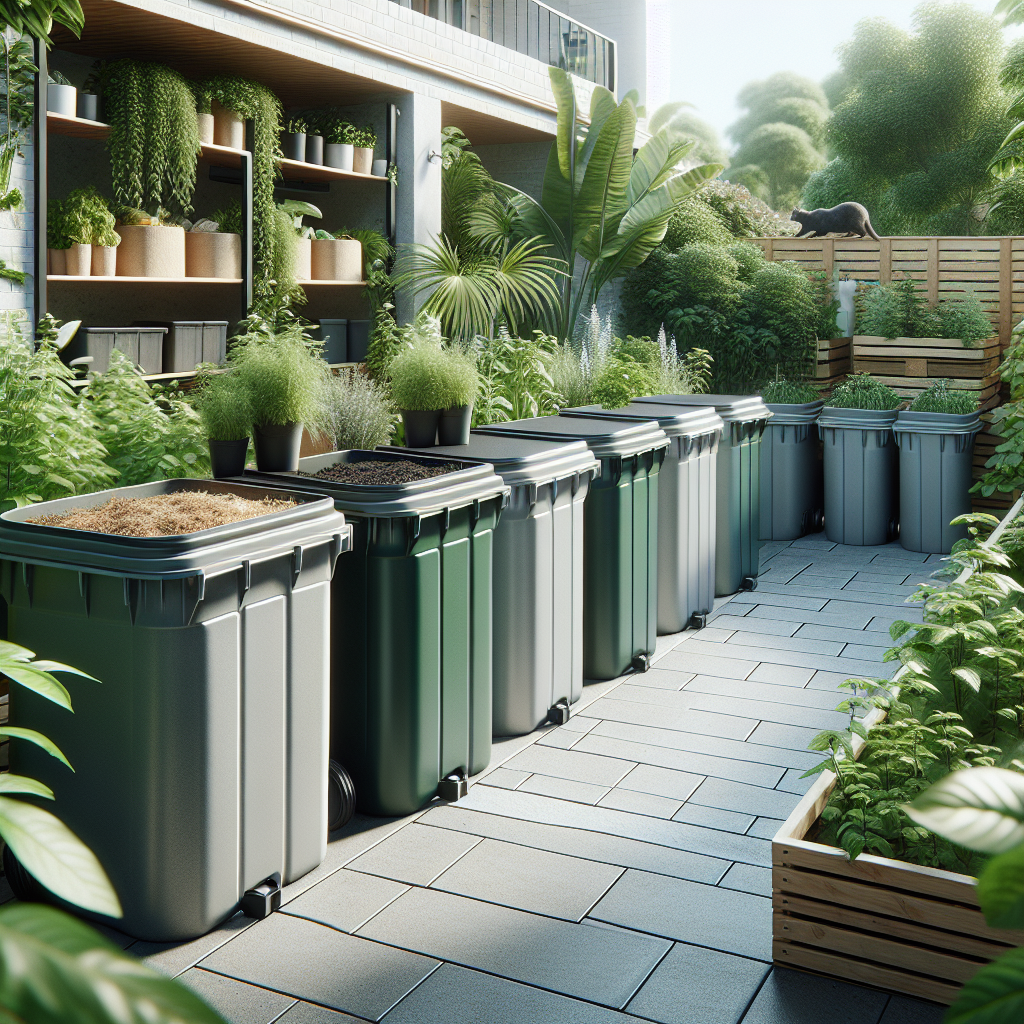How to Recognize and Deal with Broadleaf Plantain
Updated April 20, 2024 at 3:58 pm

Understanding Broadleaf Plantain: Identification and Characteristics
-
Pet Friendly:
Yes, broadleaf plantain doesn’t contain any known substances that are harmful to pets, making it safe for homes with furry companions.
Light Requirements:
Broadleaf plantain prefers full sun to partial shade, so when managing it, consider its adaptability to various light conditions.
Watering:
This resilient weed can tolerate dry conditions and doesn’t require constant watering.
Humidity:
It isn’t particularly demanding regarding humidity and can survive in a range of environments, from dry to moderately humid.
Temperature:
It grows in a variety of climates, from cold northern regions to warm southern areas.
Difficulty:
Controlling broadleaf plantain can be challenging, as it’s a hardy and persistent weed, making it a formidable opponent in the garden or lawn.
Hey there, if you’re stepping outside and noticing flat, rosette-forming plants taking over your lawn or garden, chances are you might be dealing with broadleaf plantain. This common perennial weed has a knack for popping up where you least expect it, often in compacted soil that’s been a little neglected. But don’t fret, I’m here to give you the lowdown on how to recognize this plant, handle it effectively, and prevent it from making a comeback.
To start, let’s zoom in on identification. Broadleaf plantain has unmistakable broad, oval leaves that grow in a circular pattern from its center. The leaves are robust, with prominent veins that run parallel to each other and are usually quite tough to the touch. Come summertime, it sends up a distinctive flower stalk that’s leafless, rising directly from the root. This stalk is topped with a mini cob of tiny, petal-less, brownish flowers. It might seem harmless but left unchecked, this plant can become a true garden gatecrasher.
Dealing with Broadleaf Plantain: Effective Removal Practices
When it comes to removing broadleaf plantain, patience and persistence are key. It sports a deep taproot, and if you leave any part of it behind, you’ll likely see it resurface. One tried-and-true method is hand-pulling. This is most effective after a good rain when the soil is loosened up. Grip the weed near the base and pull gently to try and get as much of the taproot as possible. If hand-pulling feels like a workout, there are various tools to aid in the battle.
For instance, a tool like the Fiskars Deluxe Stand-up Weeder is a popular choice among garden veterans. This nifty device allows you to extract weeds like broadleaf plantain without bending over, which can save your back some serious labor. According to product reviews, users have found that its four serrated, stainless-steel claws grab onto the taproot securely, making removal much more efficient. Plus, the easy-eject mechanism on the handle allows for quick disposal, speeding up the process of clearing an area.
Find This and More on Amazon
If pulling weeds isn’t your style, you could opt for the chemical route. Herbicides that contain ingredients like glyphosate, marketed under brands like RoundUp, are effective against broadleaf plantain, but make sure to follow the instructions to the letter and take the necessary precautions to protect yourself and the surrounding vegetation.
Preventing Future Growth: Keeping Broadleaf Plantain at Bay
One outbreak does not have to signal a perennial plantain problem. Once you’ve removed the existing broadleaf plantain, it’s wise to examine your soil quality. Compaction is a friend to this weed, so aerating your lawn can discourage its return. Throw in some good lawn care practices like proper watering, fertilizing, and mowing at the correct height, and you’re creating an environment that’s more friendly to grass than weeds.
Now, one might be tempted to look into pre-emergent herbicides as a preventative measure. Something like Espoma Organic Weed Preventer, which reviewers claim, does a solid job inhibiting seed germination of broadleaf plantain without the use of harsh chemicals. Its main ingredient is corn gluten meal, which doubles as lawn food, ticking both boxes for those looking to maintain a weed-free lawn while going the organic route.
Find This and More on Amazon
It’s clear that knowledge and the right approach can turn a daunting weed situation into a manageable one. With the information provided here, you might well be on your way to reclaiming your lawn or garden from the clutches of broadleaf plantain. Remember to keep an eye out for those distinctive leaves and act swiftly before it can stake its claim. As with most things in gardening, a proactive stance can save you a heap of trouble down the road. Happy weeding!
Organic and Eco-Friendly Solutions to Broadleaf Plantain
For those of you leaning towards a greener approach, fret not! You can tackle broadleaf plantain with organic methods too. Boiling water is a simple but effective technique. Pour it over the leaves and the crown of the plant, and it will scorch the plantain, causing it to wither away. However, be cautious, as boiling water won’t discriminate and can harm your desirable plants if they’re in the path!
Vinegar is another organic warrior in this fight. Its acetic acid content can act as a natural herbicide. A concoction of vinegar and a few drops of dish soap, sprayed directly onto the plantain, can dry it out. Despite being a spot treatment, remember that vinegar can harm other plants and microorganisms in the soil, so use it judiciously.
Natural Companions: Plants That Can Help Suppress Broadleaf Plantain
Companion planting is another tactic you might consider. Adding certain types of plants to your garden can create an inhospitable environment for broadleaf plantain. For instance, dense-growing ground covers or robust perennial plants can outcompete it for resources and space, naturally suppressing its growth. Clover varieties, for instance, can be an excellent living mulch that both nourishes the soil and keeps weeds like plantain in check.
Increasing the biodiversity of your lawn with a mix of grass types is also beneficial. This diversity makes it harder for broadleaf plantain to establish itself as the different species of grass compete for the same resources, effectively crowding out potential weeds.
Identifying and Addressing the Causes of Broadleaf Plantain Infestation
Understanding why broadleaf plantain has appeared in your area can be pivotal to controlling it. Poor soil quality, overcompaction, and insufficient turf health are like rolling out the red carpet for this weed. Getting to the root of the issue might involve soil testing to check for imbalances or compaction and then addressing these issues through aeration, proper fertilization, and pH balancing.
Ensuring that your lawn isn’t mowed too short is another step in prevention. A taller lawn shade the soil, which helps prevent broadleaf plantain seeds from germinating. It’s a game of strategy as much as it is one of action, and understanding the conditions that favor the plant helps in its defeat.
Professional Assistance: When to Call in the Experts
If you are at your wit’s end, it might be time to call in the pros. Lawn care services and landscaping professionals can provide a thorough assessment of your property and offer targeted solutions. This might include soil treatments, professional aeration services, selective herbicide applications, and comprehensive lawn care programs tailored to keep broadleaf plantain at bay.
Remember, when choosing a professional service, to look for those with solid expertise and certifications. Services like TruGreen are well-known in the industry and often have package deals designed for weed control and prevention, alongside other aspects of lawn maintenance. The investment might be well worth it if it means reclaiming your outdoor space and getting peace of mind.
Putting it All Together: A Comprehensive Approach to Broadleaf Plantain Management
Dealing with broadleaf plantain is much like solving a complex puzzle. It requires an understanding of the weed itself, the right tools and methods for removal, and strategies to prevent its return. Whether you choose manual removal, organic solutions, chemical treatments, or professional services, the goal remains the same: to maintain a healthy and vibrant lawn or garden.
Through cultural practices like proper mowing and soil care, using tools such as stand-up weeders for removal, and opting for pre-emergent herbicides or organic preventatives, you can create a tailored plan to keep broadleaf plantain from taking over. And remember, persistence is key! Regular monitoring and maintenance will ensure that your green spaces remain just that—green, without the unwelcome presence of this resilient weed.
Share your progress and challenges in the comments below or on social media. Many gardeners are fighting the same battle, and your insights could provide someone else with the solution they’ve been seeking. Together, we can keep our gardens and lawns free from the grip of broadleaf plantain. Continue on your gardening adventure with confidence, and know that with the right knowledge and tools, any weed can be vanquished.
Choosing the Right Herbicides for Broadleaf Plantain Control
When you dive into the world of herbicides, you’ll find a range of products promising to wipe out broadleaf plantain. The key is finding one that is both effective and suitable for the rest of your garden or lawn. Selective herbicides are designed to target broadleaf weeds without harming grasses, which makes them a preferable choice for lawns.
Products containing MCPP, dicamba, or 2,4-D, such as Ortho Weed B Gon, are often recommended by experts to tackle broadleaf plantain. User reviews generally suggest that when applied according to the manufacturer’s guidelines, these herbicides effectively control the weed while preserving the integrity of the lawn. Just be sure to apply them during mild weather to prevent vapor damage to nearby garden plants.
Find This and More on Amazon
Maintaining Your Tools for Broadleaf Plantain Removal
Maintaining a pristine garden isn’t just about getting your hands dirty—it’s also about keeping your tools in check. For those using manual tools like the Fiskars Deluxe Stand-up Weeder, ensuring the claws remain sharp and clean is vital to its performance. It’s said that regularly oiling the mechanical parts can keep the tool functioning smoothly for seasons to come.
On the other hand, if you’ve gone the chemical route, proper storage and disposal of herbicides will protect not only your family and pets but also the environment. Containers should be tightly sealed and kept in a cool, dry place out of direct sunlight, and any excess product should be disposed of according to your local regulations to avoid contamination.
Implementing Cultural Controls to Suppress Broadleaf Plantain
Cultural controls are another important aspect of combating broadleaf plantain. This includes anything that improves the overall health and competitiveness of your lawn, such as regular overseeding with resilient grass varieties. A dense turf is less inviting to weeds because there is little room for them to establish.
Additionally, adjusting your lawn care schedule to avoid fertilizing or watering too much during peak broadleaf plantain growing periods can hinder its spread. It’s also wise to keep an eye on the pH level of your soil, as broadleaf plantain often takes advantage of imbalances to thrive. Test kits are readily available and can help in customizing your soil treatments.
The Role of Technology in Broadleaf Plantain Management
Thankfully, technology has caught up with garden care, offering helpful apps and tools that can aid in identifying weeds and scheduling garden maintenance. For example, using an app like PictureThis can help confirm the identity of broadleaf plantain and provide additional tips for its control. These apps usually include features such as plant databases, care reminders, and even community support.
Similarly, smart irrigation systems can ensure that your lawn receives the ideal amount of water without overdoing it, which in turn can prevent the moist conditions that broadleaf plantain might favor. It’s all about giving the right amount of care—not too little, not too much—to maintain that balanced ecosystem in your garden.
Exploring Alternative Landscaping Techniques
Switching up your landscaping can also impact the fight against broadleaf plantain. If you find the weed continually reappearing in the same spots, you might want to consider alternative landscaping methods for those areas. Ground cover plants, mulching, or even stepping stones can be both an aesthetic and functional replacement for trouble spots that are prone to weed invasion.
It’s sometimes a matter of trial and error, but incorporating these different elements can disrupt the usual pattern of weed growth and provide a long-term solution to the problem. Plus, adding variety to your landscaping can increase its visual appeal and potentially raise property value—win-win!
Joining Forces: Community Weed Management
Lastly, remember that weed control can be a community effort. If broadleaf plantain is a common issue in your neighborhood, it might be beneficial to team up with your neighbors. Pooling resources for bulk herbicide purchases or organizing community weed-pulling days can foster camaraderie while keeping the whole area clean and green.
Some communities have local gardening clubs or societies that focus on educating residents about best practices for weed management and garden care. If your area has such a group, joining in can be an excellent way to learn, share strategies, and keep the broader environment free from broadleaf plantain and other invasive plants.
Being equipped with knowledge and the right tools, applying consistent effort, and opting for a combination of manual, organic, chemical, and technological solutions, you can keep your outdoor spaces pristine. Keep at it, and don’t hesitate to share your thoughts and experiences as you work towards a broadleaf plantain-free environment. Happy gardening!
Shop more on Amazon

